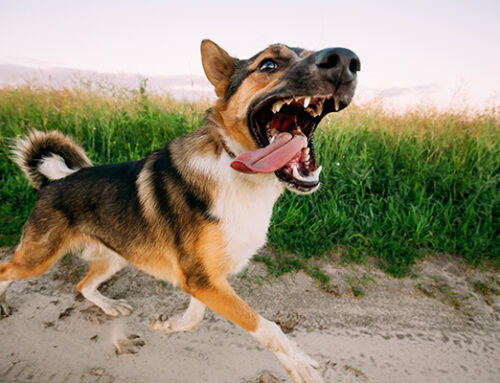Teaching Your Dog To Be Calm

Do you have a dog that can’t settle down, especially when there is a lot of activity going on around them? Or a dog who prefers to constantly play or be busy instead of calm and relaxed, regardless of how much you exercise them? I lived with one and know exactly how tiring these dogs can be.
The good news is it’s actually incredibly easy to teach your dog to be calm and it doesn’t involve having to exercise them more (provided their exercise needs are already sufficiently being met). How? By rewarding your dog for being calm every time it happens.
But why would you reward an already resting dog when that’s something he would naturally do? Because behaviours that are rewarded are more likely to be chosen by your dog again instead of those behaviours you don’t like. Your dog is way more likely to choose relaxation if there is a payoff for it. If there isn’t, he will default to the next most reinforcing activity of being the crazy maniac he loves to be.
Here’s how it goes: You see your dog relax and settle in for a rest. Calmly and quietly approach him and place a treat on the floor, bed or couch right under his nose. Walk away. Don’t get excited. Don’t pet your dog. Don’t even talk to him. Simply drop a treat and leave. Periodically come back and reward again if he stays resting. Repeat this throughout the day every time you see your dog in a calm and relaxed state. It won’t take long before you see him choosing to settle a lot more often than he did before.
“But my dog loves treats and gets super excited any time I feed him.” I get that. Many dogs do. Often we’ve created that excitement by how we interact with them when we feed them. With this exercise, your job is to ignore your dog if he becomes active after the treat. Remember, behaviour that is rewarded (and even acknowledgement for some dogs can be a reward) will continue and engaging him when he activates only encourages it. So leave him be until he settles again, at which point you will calmly, quietly (and discreetly, if possible) walk up, place a treat on the ground under his nose and walk away.
Several years ago, I gave this exercise to some clients to work on. They had a 9 month old Australian Shepherd (a notoriously high energy breed) who incessantly demand barked at them whenever they weren’t engaged with her. They literally couldn’t stand still without her harassing them. After only two days of continuously reinforcing calmness throughout the day, their dogs behaviour completely changed. The following week at class, instead of barking at the owners every time they stood still to listen to instructions, she calmly – and voluntarily – lay quietly down at their feet until the next activity began. It was an incredible transformation.
As for how long you need to keep this up to maintain the behaviour? Once calmness becomes your dogs default choice and you start forgetting you’re supposed to reward them for it, you’ll know it’s time to wean the treats away. (Calm petting for some dogs can occasionally be used in lieu of food to reward but not all dogs appreciate being touched while they are resting so know your dogs preferences before doing so.)
Try it and see for yourself how easy it can be to turn your dogs hyperactivity into relaxation. Then the next time you hear the old adage “Let sleeping dogs lie,” you can add ‘but reward them for doing it if you want it to happen again.’
Until next time,
Darcie Jennings
Stay connected with us on Facebook


























